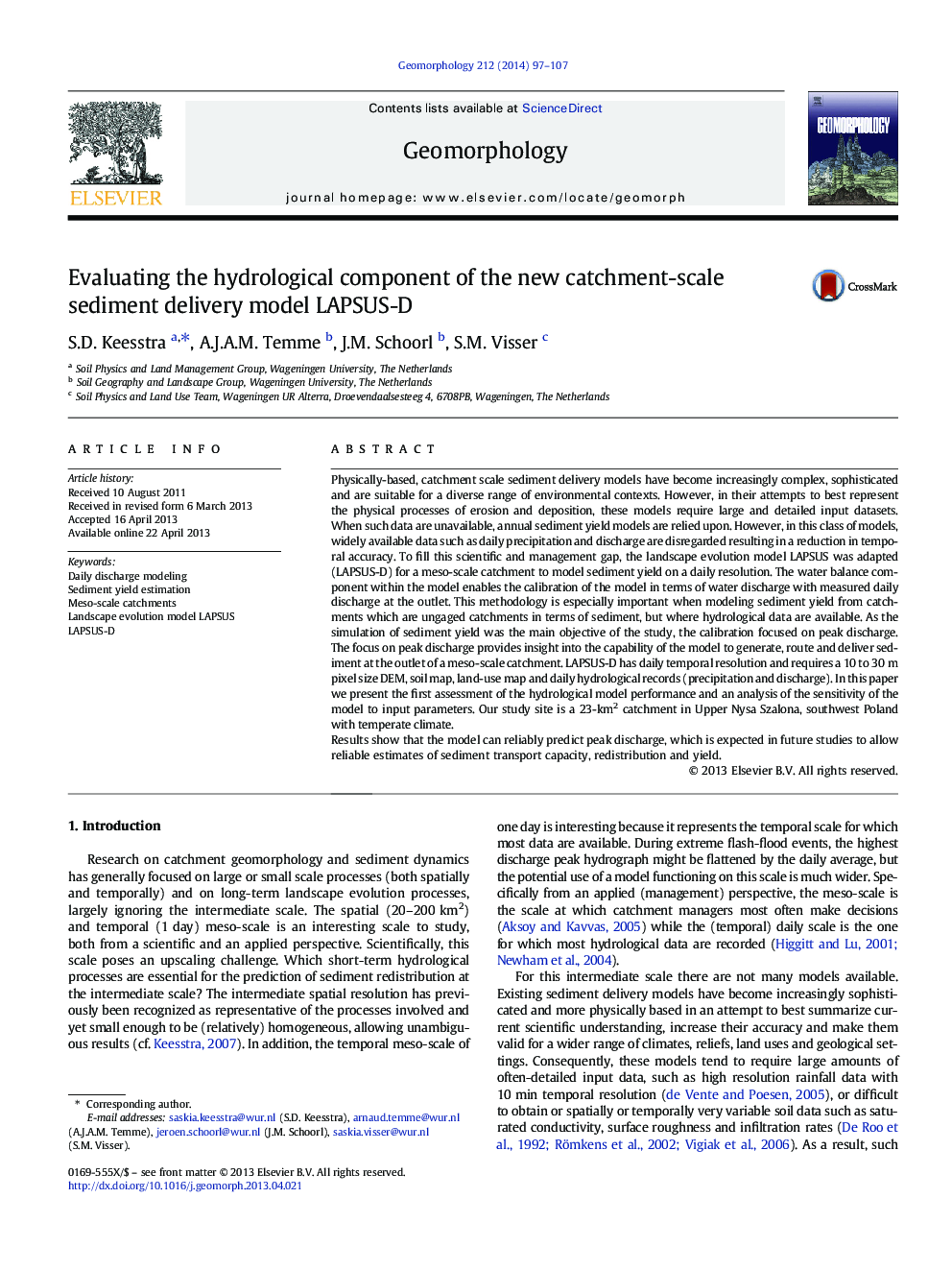| Article ID | Journal | Published Year | Pages | File Type |
|---|---|---|---|---|
| 4684547 | Geomorphology | 2014 | 11 Pages |
•First test of the hydrological functioning of a new sediment delivery model LAPSUS-D•Works on meso-scale: both spatial (20–200 km2) catchments and daily time-steps•Only needs: DEM, soil map, land-use map and daily precipitation and discharge•First test in Polish catchment shows good results for peak discharge simulation.•Good hydrological prediction gives a good indication for sediment dynamics.
Physically-based, catchment scale sediment delivery models have become increasingly complex, sophisticated and are suitable for a diverse range of environmental contexts. However, in their attempts to best represent the physical processes of erosion and deposition, these models require large and detailed input datasets. When such data are unavailable, annual sediment yield models are relied upon. However, in this class of models, widely available data such as daily precipitation and discharge are disregarded resulting in a reduction in temporal accuracy. To fill this scientific and management gap, the landscape evolution model LAPSUS was adapted (LAPSUS-D) for a meso-scale catchment to model sediment yield on a daily resolution. The water balance component within the model enables the calibration of the model in terms of water discharge with measured daily discharge at the outlet. This methodology is especially important when modeling sediment yield from catchments which are ungaged catchments in terms of sediment, but where hydrological data are available. As the simulation of sediment yield was the main objective of the study, the calibration focused on peak discharge. The focus on peak discharge provides insight into the capability of the model to generate, route and deliver sediment at the outlet of a meso-scale catchment. LAPSUS-D has daily temporal resolution and requires a 10 to 30 m pixel size DEM, soil map, land-use map and daily hydrological records (precipitation and discharge). In this paper we present the first assessment of the hydrological model performance and an analysis of the sensitivity of the model to input parameters. Our study site is a 23-km2 catchment in Upper Nysa Szalona, southwest Poland with temperate climate.Results show that the model can reliably predict peak discharge, which is expected in future studies to allow reliable estimates of sediment transport capacity, redistribution and yield.
